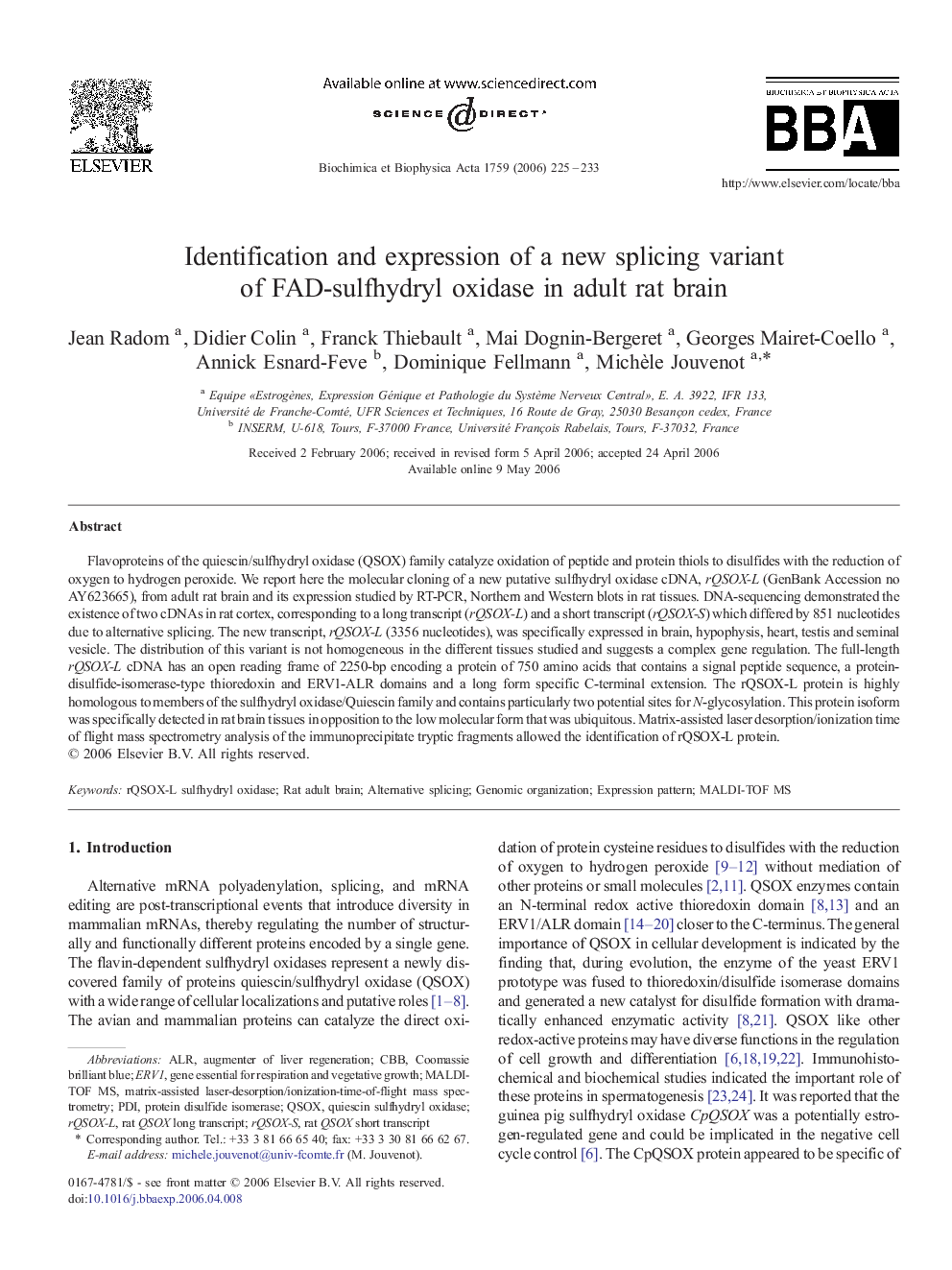| Article ID | Journal | Published Year | Pages | File Type |
|---|---|---|---|---|
| 1947225 | Biochimica et Biophysica Acta (BBA) - Gene Structure and Expression | 2006 | 9 Pages |
Abstract
Flavoproteins of the quiescin/sulfhydryl oxidase (QSOX) family catalyze oxidation of peptide and protein thiols to disulfides with the reduction of oxygen to hydrogen peroxide. We report here the molecular cloning of a new putative sulfhydryl oxidase cDNA, rQSOX-L (GenBank Accession no AY623665), from adult rat brain and its expression studied by RT-PCR, Northern and Western blots in rat tissues. DNA-sequencing demonstrated the existence of two cDNAs in rat cortex, corresponding to a long transcript (rQSOX-L) and a short transcript (rQSOX-S) which differed by 851 nucleotides due to alternative splicing. The new transcript, rQSOX-L (3356 nucleotides), was specifically expressed in brain, hypophysis, heart, testis and seminal vesicle. The distribution of this variant is not homogeneous in the different tissues studied and suggests a complex gene regulation. The full-length rQSOX-L cDNA has an open reading frame of 2250-bp encoding a protein of 750 amino acids that contains a signal peptide sequence, a protein-disulfide-isomerase-type thioredoxin and ERV1-ALR domains and a long form specific C-terminal extension. The rQSOX-L protein is highly homologous to members of the sulfhydryl oxidase/Quiescin family and contains particularly two potential sites for N-glycosylation. This protein isoform was specifically detected in rat brain tissues in opposition to the low molecular form that was ubiquitous. Matrix-assisted laser desorption/ionization time of flight mass spectrometry analysis of the immunoprecipitate tryptic fragments allowed the identification of rQSOX-L protein.
Keywords
Related Topics
Life Sciences
Biochemistry, Genetics and Molecular Biology
Biochemistry
Authors
Jean Radom, Didier Colin, Franck Thiebault, Mai Dognin-Bergeret, Georges Mairet-Coello, Annick Esnard-Feve, Dominique Fellmann, Michèle Jouvenot,
